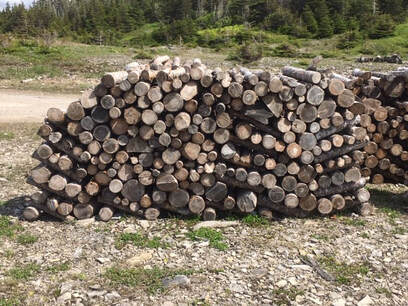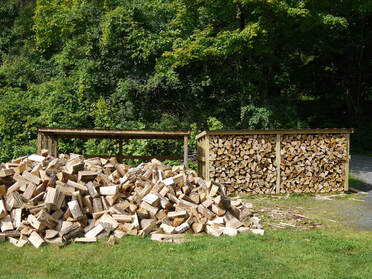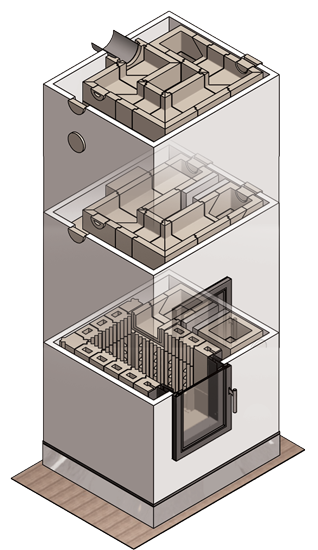Congress Passes Consolidated Appropriations Act of 2021, Including Tax Credit for Wood Heaters The Consolidated Appropriations Act of 2021 officially passed on December 27th with extensive bipartisan support, including a significant tax incentive for homeowners who install a wood heater that produces heat at 75% or higher heat value. Homeowners who purchase heaters installed in 2021 that meet the EPA high efficiency standard will receive a 26% tax incentive for cost of purchase and installation, and will receive a 22% tax credit for heaters installed through 2022 and 2023.
Masonry heaters designed and built by New England Hearth and Soapstone may exceed a 75% higher heating value, allowing not only for significant initial tax savings, but for a continued reduction in heating cost throughout the year. Our masonry heaters require significantly less fuel than other wood-burning heating solutions, including fireplace inserts and wood-stoves. To learn more about our masonry heaters, click here. To read more about the recent legislation, click here. Stacking Firewood for Efficiency
 The wetter the wood the more effort and energy there will have to go into the fire. Dry wood is essential to getting maximum heat from your fire. All combustion has water as a by product. All water in the wood or from combustion is converted to steam in the fire. The fire has to dry the wood before it will gasify and burn. Knowing how to properly store and stack your wood will serve you well in the long run whether you have a masonry heater or any other type of fireplace. Wood will not dry well with the bark intact so it needs to be split. For the best results, split down to approximately 3”-4” cross section. The best time to cut fire wood is in the fall or winter when the sap is down in the wood, then there is less moisture to have to dry out. The wood needs to be stacked off the ground and with a cover to keep the rain off of it. It also needs air movement through the sides of the pile to help it dry out. Two full years of air drying will allow the wood to reach optimum dryness of 15-20% moisture content. The dryer the better. Less moisture, more heat, less wood you will have to burn. The trouble with wood is moving and handling it. You want to work smart and move it the least amount of times possible. Our next blog post will go more in depth in how to store your wood. Wood Storage is Key How you store your wood can affect drying time and the amount time you spend handling it. Maximizing your storage will help create efficiencies that pay off in the long run.
This may sound like a hefty list of requirements but a good outdoor firewood shed ensures that you don’t have to think about many of them.
In order to meet our firewood goals let’s go over some of the things you can do to make firewood storage easy and efficient. Location Locate a place near your home where you have enough space to store a minimum of 2 years worth of firewood. Be sure this place that you do not mind looking at and is not going to be in the way of your cars or blocking areas of your house. Firewood can attract pests so be sure to place your firewood storage in an area that will not harm your house. The fewer times you need to touch your firewood the better do be sure that you have an easy access point to bring your firewood into the house. Some people choose to build an attached storage shed that is accessed from inside. Wood storage can be elaborate but does not need to be. If possible it is helpful to have an area near your heater in your home to store about 1 weeks worth of firewood. This also give the wood an little extra drying time before burning and makes it convenient to build your fires without having to go outside to get wood. Firewood Stacking It is imperative that the wood is stored off the ground in order to keep it free from insects and to provide a barrier from the moisture in the ground while allowing air flow to move under the wood pile. Moisture in the wood keeps your fire from burning efficiently. A slow fire contributes to the creation of creosote and, if you have a bake oven, prevents it from getting to the optimal cooking temperature. Covering the your wood pile with a roof with an overhang is idea but it must at least be covered with a tarp to it protected from the weather. If using a tarp be sure to cover the top only so that air will be able to flow through the wood pile and moisture in not trapped under the tarp. Air flow in your shed or anywhere you store your wood also helps the wood dry. The sides should be open but you want to keep your wood pile from getting wet on the sides if possible that is one reason that having a roof with an overhang will allow wood to get airflow while helping to keep the sides of your wood pile dry. If the wood is dry and there is no ground contact, bugs are also less of a problem. No one wants to bring pests in their home with their firewood so keeping it dry will help alleviate this so it never is a problem. Your wood storage solution should have plenty of room, both to prevent you from hitting your head when you access your wood. When stacking your wood, organize it in a way that you can access the older, driest wood first, working your way through that before you have to touch the newer, less dry wood. Again we want to touch firewood as few times as possible. A little forethought around wood storage will pay off for years to come. If you think of these things when you are first designing your wood storage, you will find that heating with wood becomes simple and efficient.
|
NEHS
At New England Hearth & Soapstone, we strive to spread the joy of heating with firewood. Archives
December 2020
Categories |
|
|
New England
Hearth & Soapstone Goshen, CT 860-491-3091 |
© 2020 New England Hearth & Soapstone
Website by Steers Studios



 RSS Feed
RSS Feed
